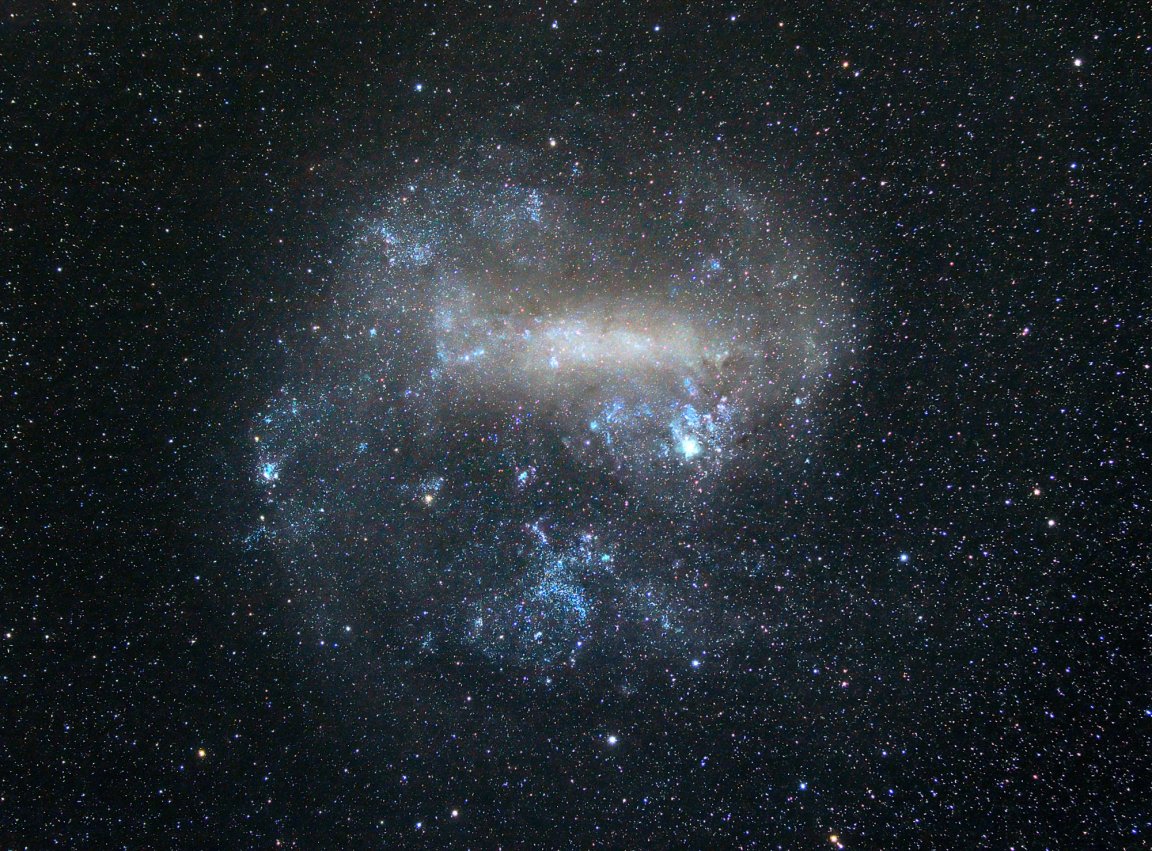

This is the famous Large Magellanic Cloud (LMC). It is one of the most prominent satellite galaxies to the Milky Way and can be found about 163,000 light-years from the place we call home. Technically, the LMC is the third closest galaxy to the Milky Way, but the two closest galaxies (the Sagittarius Dwarf Spheroidal and Canis Major Dwarf Galaxy) are very small, very dim, and unimpressive. The LMC does have the status of being the fourth largest galaxy in the Local Group, behind the Andromeda Galaxy, the Milky Way, and the Triangulum Galaxy.
The LMC is an irregular galaxy and has been given the Irr/SB(s)m designation in the NASA Extragalactic Database. Even though the LMC is misshapen and irregular today, it has an obvious bar at the center. This has lead astronomers to guess that the LMC was once a barred spiral galaxy, but interactions between it, the Small Magellanic Cloud, and the Milky Way have caused it to get deformed.
The LMC is easily visible to the naked eye in the Southern hemisphere. The LMC is also used by astronomers as a way to calibrate our “distance measuring techniques.” Astronomers are able to use the LMC to make sure our standard candles work like we think they should.
The LMC is also host to a number of fascinating objects, so many that the astronomer Robert Burnham Jr. described the LMC as being an “astronomical treasure-house, a great celestial laboratory for the study of the growth and evolution of the stars.” The LMC is home to about 60 globular clusters, 400 planetary nebulae, 700 open clusters, a countless number of giant and supergiants. There is also a bridge of gas that connects the Small Magellanic Cloud with the LMC, which suggests strong tidal interactions between the two satellites.